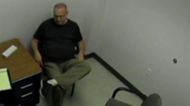48 Hours, a true crime CBS show, features a chilling case of Stephan Smerk, who, decades after conducting a homicide and getting away with it, submitted his DNA and confessed to his crime of killing Robin Warr Lawrence, in her home in Springfield, Fairfax County, Virginia. In his statement, he admitted that he is a "serial killer" who has tried to control himself only for his wife and kids.
"I honestly believe that if it wasn't for my wife and my kids, I probably would be a serial killer," Smerk said. "I am a serial killer who's only killed once."
Read on to learn more about Stephan Smerk and what we know about his crimes.
Here is what we know about Stephan Smerk's crimes, as shown in 48 Hours

Stephan Smerk was a married man with two kids who lived in Niskayuna, New York. In 1994, when he committed the crime, he was serving in the US Army and was stationed in Virginia. Since then, the case has gone cold, with the detectives not finding a proper match to the DNA, and Smerk has continued to live an everyday life with his family, with no criminal record reported.
In 2023, some detectives reached out to him, and he voluntarily provided them with his DNA sample. The same evening, he called the local police and confessed to his crimes. He posed his wife and children as the reason behind living a conventional life. Otherwise, he admitted that he is no less than a "serial killer who has only killed once."
This confession put the authorities in shock, and they matched Smerk's 25-year-old picture with the digitally generated image they had based on the DNA they found at the crime scene. According to reports, her 2-year-old daughter was in the house at the time of the murder, with Lawrence being stabbed 49 times until she was killed. After a long time, when the neighbourhood still hadn't received Robin's response, they entered the house to check on her. That is when they witnessed the bloody scene with the little daughter unharmed.
The investigators collected a DNA sample from the scene, including blood on a washcloth in the bathroom, and developed a profile. Even after decades, they didn't find a match in their national database. They also dug into whether Smerk shared any connection with Lawrence, but didn't find any. This suggests that the victim was selected apparently at random.
This is how Smerk was caught for his crime, as per 48 Hours
The 48 Hours episode confirms that the advancement in DNA technology played a key role in the case. In 2019, the detectives had submitted the preserved DNA samples to Parabon NanoLabs. This company used to use genealogical methods to build family trees and compile lists of suspects based on them. It compared the unknown DNA to a publicly available, generic database and could match even distant relatives, if any.
With this, the investigators can go through the family tree and lead to an individual who might be the killer based on age, geography, and timeline. However, in Robin's case, the database reported a solvability rate of 0, making the case unsolvable, as explored in 48 Hours.
The detectives, anyway, tried to dig into the database further and tracked Smerk in New York. They approached him while he was taking out his trash, and he agreed to give them a voluntary swab. That same evening, he called the local police and confessed to his crime.
“I knew I was going to kill somebody… I didn’t know who.” Smerk confessed.
He randomly went to a neighbourhood he was familiar with and selected a house. He broke in, cut the telephone cord, and stabbed the person he saw first. After this confession, as shown in 48 Hours, Smerk received a 70-year prison sentence, with the judge calling the crime the worst they have seen in the county.
